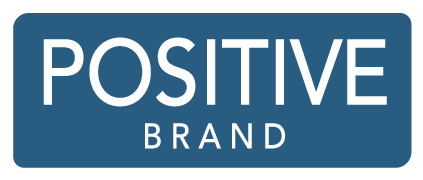T
hese are the 2 most common reasons marketing programs fail:
1) Poor planning and 2) weak execution
It points to WHERE marketing programs fail but it doesn’t explain WHY. You have to understand WHY if you want to solve these problems.

Why Marketing Programs Fail
1) Poor Planning
Let’s face it. Everyone is in a hurry. You can blame the Internet for that.
Clicking a button and getting instant answers and instant results, whether you want to know the capital of Kentucky (Frankfort) or you need to order a ride — activities so common today they require no thought. To be fair, microwaves and mobile phones deserve some of the blame too.
Today it’s just human nature to expect fast solutions.
In marketing, the culprit is less about microwaves and usually something called the MVP (Minimal Viable Product).
Marketers have been led to believe that they can learn whatever they need about their marketing by pushing communication into the marketplace as soon as it’s close to what they think is a solution. Throw it in the mix and let the data sort it out.
Whether it’s the MVP or just pressure from the C-suite, this hasty marketing is a disaster for two reasons.
First, it’s causing an industry to slowly unlearn best practices when it comes to strategic planning.
And second, it’s flooding consumers in the marketplace with even more unwelcome noise that is doomed to fail (and consumers really hate that).
2) Weak Execution
Being in a hurry has trained people to make snap decisions, use their instincts, and shoot from the hip. If people’s intuition was generally reliable then most people would be very successful at investing in the stock market.
According to Quota, 85-90% of us lose money in the stock market, in case you were wondering. So much for instinctive decision making.
Marketing programs fail because the same subjective approach to planning was also applied to selecting the creative solution to the marketing challenge.
Many beautiful and graceful solutions have found their way into the graveyard of failed marketing campaigns because they were a pretty face without any substance.
The worse part of this situation is that a lot of time and energy and capital is invested in propping up an empty idea — one that seems perfect on the surface to everyone close to it but is destined to trip and fall on its pretty face the moment it walks in front of its intended audience.
The answer to this problem is obvious. Exceptional Planning and Brilliant Execution.
An obvious answer? Maybe, but if obvious answers were that simple then everyone would eat right, get plenty of rest, and exercise everyday. It isn’t because diet, exercise, and sleep are hard or expensive, it’s just because they aren’t a part of our routine.
At Positive Brand, the discipline needed for exceptional planning and brilliant execution are baked into our routine.
Exceptional Planning
We spent years in a battle with clients, asking them for research and insights to help inform our creative solutions. Usually these requests were met with apologies from the client. “We’ve never done that.” “Research is expensive.” “We don’t have the time for that step.”
Those excuses made no difference. We needed insights so we developed our own research techniques in-house — the kind of techniques that can be implemented quickly so we get the insights we need to point us in the right creative direction.
In addition to a great research practice, we also employ analytical techniques to define our direction with the Williams Behavioral Change Model and the COM-B Model.
All our research and analysis is accomplished quickly, inexpensively, and effectively — all for the purpose of quickly producing more effective strategies right from the start.
Brilliant Execution
When we present creative solutions, clients always ask us “which is our favorite.” And that’s the problem. People tend to decide what creative solution to implement based on their feelings rather than their insights.
Just as common is the tendency to merge the best parts of the creative ideas together into a single “Frankenstein” solution.
Watching beautiful ideas turn into monsters compelled us to develop a better way, one that is fast and informative.
Now when we develop creative options, we conduct a simple survey with unbiased consumers that meet the target audience’s demographics. In typical fashion this means putting 3 creative options in front of 250 people online and measure their reactions.
This process generates both quantitative results in terms of points and rankings of each option as well as qualitative results by fielding answers to open ended questions.
The results of these tests do not dictate our direction going forward. They do however provide us with a lot of unbiased feedback that help us to modify, revise, and choose the right path.
Better insights produce better results
Exceptional planning and brilliant execution is what every marketer is after. Unfortunately, too many of them have decided that it’s too expensive or takes too much time to achieve.
That’s why we developed The Framework — to provide our clients and ourselves with the resources we need to produce better insights that lead to better results.
